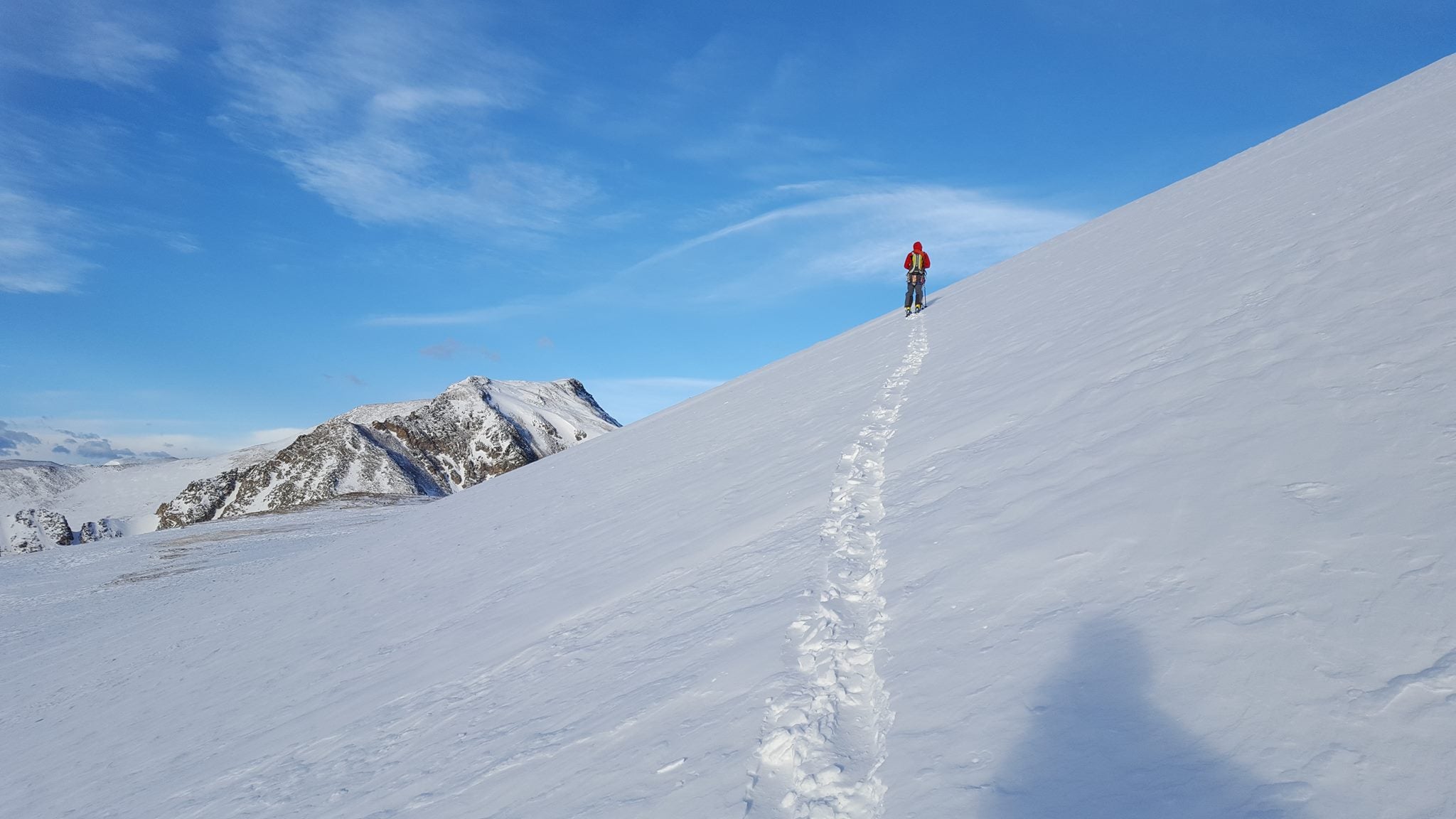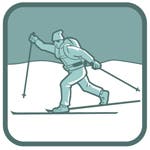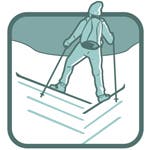Master the Basics of Backcountry Ski Touring

'Adam Roy'
In relatively gentle terrain–Yellowstone’s northern valleys, say, or a mellow approach to one of Colorado‘s winter huts–there’s no better mode of transportation than a pair of backcountry touring skis. Lighter and more comfortable than alpine models, but much faster than snowshoes, these beefed-up cross-country skis let you glide over rolling, off-trail routes with ease.
Technique
Level ground Use the classic kick-and-glide: As you slide one foot forward, push down with the opposite pole and “kick” forward lightly with your back foot to start gliding. Lightly plant the opposite pole in front of you with each stride, and work on keeping an even rhythm. On gentle downhills, use “double poling” for more efficient skiing: Crouch in an athletic stance with your skis parallel and plant both poles in front of you at once, pushing with both arms to propel yourself forward.

Uphill Switchback up long slopes rather than trying to power straight up, and don’t try to climb too steeply–15 degrees is where textured bases start slipping. Put your weight on your uphill edges to keep from backsliding. On short, steep uphill stretches, use the herringbone step: Duckwalk to the top with your toes pointed out and your weight on the inside edges, forming a backward, downward-facing wedge with your skis.

Downhill Choose a gentle path (no more than 15 degrees for beginners) free of trees, rocks, and other hazards. Lean back slightly to keep your tips from diving under the snow’s surface and assume an athletic stance with you feet shoulder-width apart. Steeper slope? Traverse it to keep speed under control, with your weight on the uphill edges, or use the classic “snowplow”–skis in a forward wedge–to slow down.
Turns Use the step turn on gentle terrain: Completely pick up your ski and put it down facing the direction you want to go. To turn while going downhill, ease into a snowplow and put more weight on the outside ski. As you turn, move your skis back into parallel position to pick up speed.
Safety
Always pack extra water, food, and a survival kit; frigid temps can quickly escalate the consequences of a simple accident. Be avalanche aware: Get educated before you hit the slopes by taking an avalanche class. Steer clear of exposed slopes steeper than 25 degrees (most slides occur on slopes between 30 and 45 degrees), snow cornices, and gullies. Not sure? Stay away.